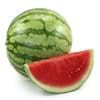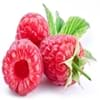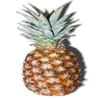Health Benefits
Arthritis prevention, Asthma treatment, Cancer prevention, Heart care, Prevents macular degeneration, Prevents rheumatoid
Asthma treatment, Bronchitis treatment, Cancer prevention, Heart care, Increases metabolic rate
General Benefits
Anti-inflammatory properties, Boosts immune system, Digestive aid, Healing of wounds, Maintains healthy cholesterol level, Strengthens bones
Anti-inflammatory properties, Controls blood pressure, Digestive aid, Eye care, Healing of wounds, Maintains healthy cholesterol level, Strengthens bones, Treatment of sinusitis, Treatment of common cold
Skin Benefits
Anti-aging benefits, Hydrates skin, Skin revitalization, Treatment of acne, Treatment of dark spots
Anti-aging benefits, Brightens and lightens complexion, Skin cleansing, Treatment of acne, Treatment of dark spots
Hair Benefits
Good conditioner, Promotes longer and healthier hair, Softening mask, Treatment of dandruff
Prevents hair loss
Allergy Symptoms
Abdominal pains, Carotenemia on excessive consumtion, Latex Allergy
Abdominal pains, Itching in tongue and other parts of mouth, Sneezing, Swelling, Tingling sensation in wrist and face, Vomiting, Wheezing
Side Effects
Allergic reaction, Skin problems, Possibly unsafe during pregnancy
Causes swollen mouth, Allergic reaction, Diarrhoea, Nausea, Skin rash, Vomiting
Best Time to Eat
As a snack in the late afternoon, Don't consume at night and before bed, Don't eat after meal
Best if taken as a breakfast (or empty stomach), As a snack in the late afternoon, Eat the fresh ones, avoid mixing with any other foods, don't eat after meal., Morning time (before lunch)
Vitamin B5 (Pantothenic Acid)
Vitamin C (Ascorbic Acid)
Vitamin K (Phyllochinone)
Phytosterol
Not Available
Calories in Fresh Fruit with Peel
Not Available
Not Available
Calories in Fresh Fruit without Peel
Type
Melon, Tree fruit
Berry, Tropical
Season
All seasons
Autumn
Varieties
Coorg Honey Dew, Pusa Dwarf, Pusa Giant, Pusa Majesty, Pusa Delicious, Pusa Dwarf, Solo, Ranchi, Taiwan-785 and Taiwan-786
Smooth Cayenne, Abacaxi, Red Spanish and Queen
Color
Orange, Yellow
Yellow
Inside Color
Orange
Yellow
Taste
Luscious, Sweet
Strong, Sweet, Tart
Origin
Mexico, Central America
Central America, South America
Grows on
Trees
Not Available
Soil Type
Rocky, Sandy, Well-drained
Clay, Sandy loam, Well-drained
Climatic Conditions
Warm, Without frosts
Hot, Sunny
Facts about
- Papaya seeds show contraceptive effects in male monkeys.
- Their seeds are used as a replacement for black pepper in some nations due to peppery taste.
- Papaya is known by funny names like paw paw or papaw and the mamao.
- A single pineapple takes 3 years to reach maturation.
- Pineapple is not an apple, but is actually a berry.
- The name is with reference to its resemblance to pine cones.
- Pineapple is sweeter if scales are more.
Top Producer
India
Costa Rica
Other Countries
Brazil, Indonesia, Mexico, Nigeria
Brazil, India, Philippines, Thailand
Top Importer
United States of America
United States of America
Top Exporter
Mexico
Costa Rica
Botanical Name
Carica papaya
Ananas comosus
Synonym
Not Available
Ananas sativus
Subkingdom
Tracheobionta
Tracheobionta
Division
Magnoliophyta
Magnoliophyta
Class
Magnoliopsida
Liliopsida
Subclass
Dillenhidae
Commelinidae
Family
Caricaceae
Bromeliaceae
Species
C. papaya
A. comosus
Generic Group
Papaya
Pineapple
Compare Papaya and Pineapple
It is important compare Papaya and Pineapple as both the fruits have a different nutritional value. Their comparison can be done on the basis of their vitamin and mineral content, calories, benefits as well as characteristics, making it easier for us to choose the best fruit for our diet. Their general health benefits are as follows:
Papaya Benefits: anti-inflammatory properties, boosts immune system, digestive aid, healing of wounds, maintains healthy cholesterol level and strengthens bones.
Pineapple Benefits: anti-inflammatory properties, controls blood pressure, digestive aid, eye care, healing of wounds, maintains healthy cholesterol level, strengthens bones, treatment of sinusitis and treatment of common cold.
Fruits are also used as a remedy for various hair problems. The hair benefits of Papaya are: good conditioner, promotes longer and healthier hair, softening mask and treatment of dandruff and hair benefits of Pineapple are: prevents hair loss. Some fruits are known to cause allergic reactions. The allergy symptoms of first fruit are: abdominal pains, carotenemia on excessive consumtion and latex allergy and the symptoms of second fruit are: abdominal pains, itching in tongue and other parts of mouth, sneezing, swelling, tingling sensation in wrist and face, vomiting and wheezing. Get sorted Papaya vs Pineapple comparison with the help of fruit comparison tool by fruitvs.com.









